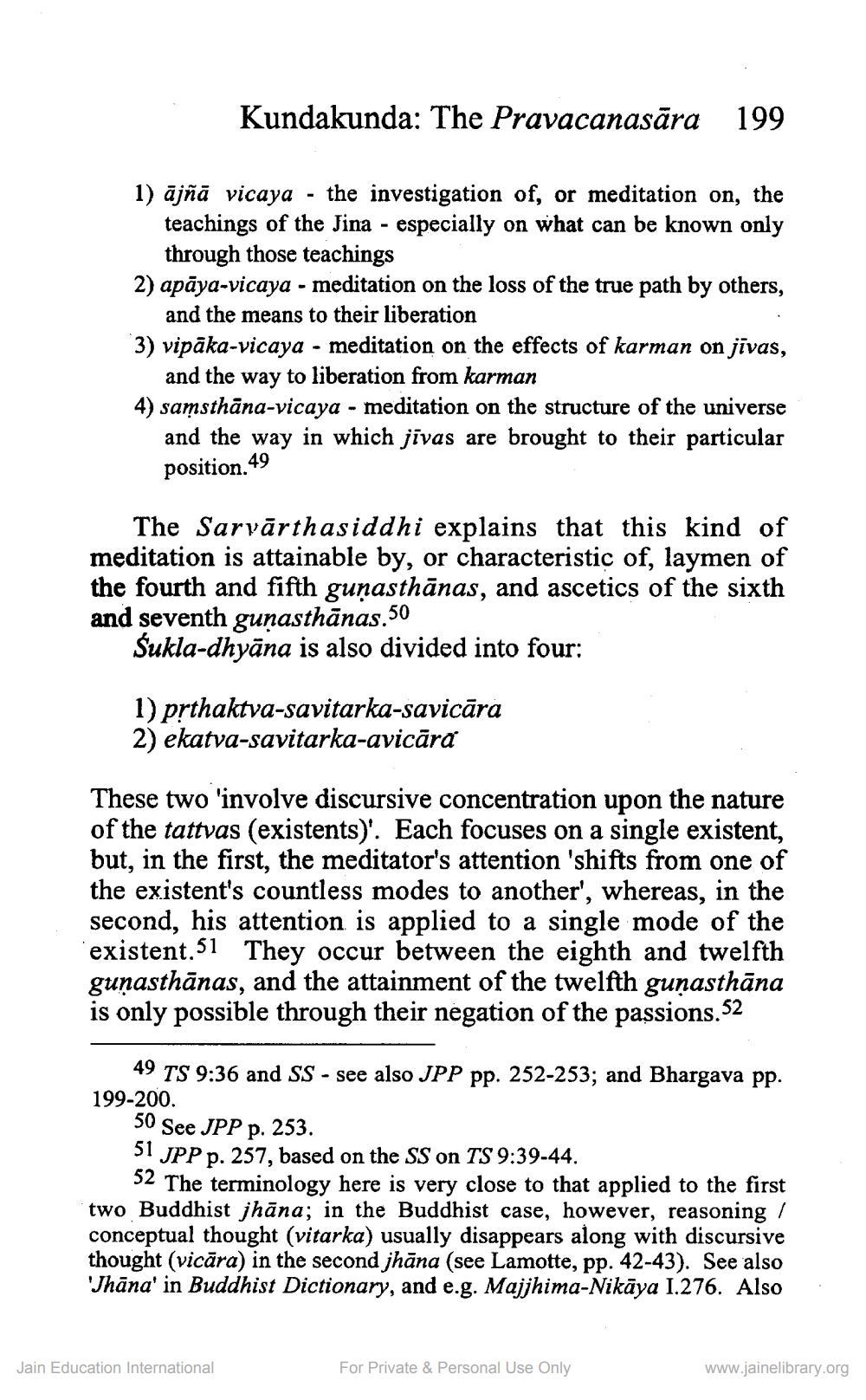________________
Kundakunda: The Pravacanasāra 199
1) ajñā vicaya - the investigation of, or meditation on, the
teachings of the Fina - especially on what can be known only
through those teachings 2) apāya-vicaya - meditation on the loss of the true path by others,
and the means to their liberation 3) vipāka-vicaya - meditation on the effects of karman on jīvas,
and the way to liberation from karman 4) samsthāna-vicaya - meditation on the structure of the universe
and the way in which jīvas are brought to their particular position.49
The Sarvārthasiddhi explains that this kind of meditation is attainable by, or characteristic of, laymen of the fourth and fifth guṇasthānas, and ascetics of the sixth and seventh gunasthānas.50
Sukla-dhyāna is also divided into four:
1) prthaktva-savitarka-savicāra 2) ekatva-savitarka-avicāra
These two 'involve discursive concentration upon the nature of the tattvas (existents)'. Each focuses on a single existent, but, in the first, the meditator's attention 'shifts from one of the existent's countless modes to another', whereas, in the second, his attention is applied to a single mode of the existent.51 They occur between the eighth and twelfth gunasthānas, and the attainment of the twelfth guņasthāna is only possible through their negation of the passions. 52
49 TS 9:36 and SS - see also JPP pp. 252-253; and Bhargava pp. 199-200.
50 See JPP p. 253. 51 JPP p. 257, based on the SS on TS 9:39-44.
52 The terminology here is very close to that applied to the first two Buddhist jhāna; in the Buddhist case, however, reasoning / conceptual thought (vitarka) usually disappears along with discursive thought (vicāra) in the second jhāna (see Lamotte, pp. 42-43). See also 'Jhāna' in Buddhist Dictionary, and e.g. Majjhima-Nikāya 1.276. Also
Jain Education International
For Private & Personal Use Only
www.jainelibrary.org




